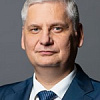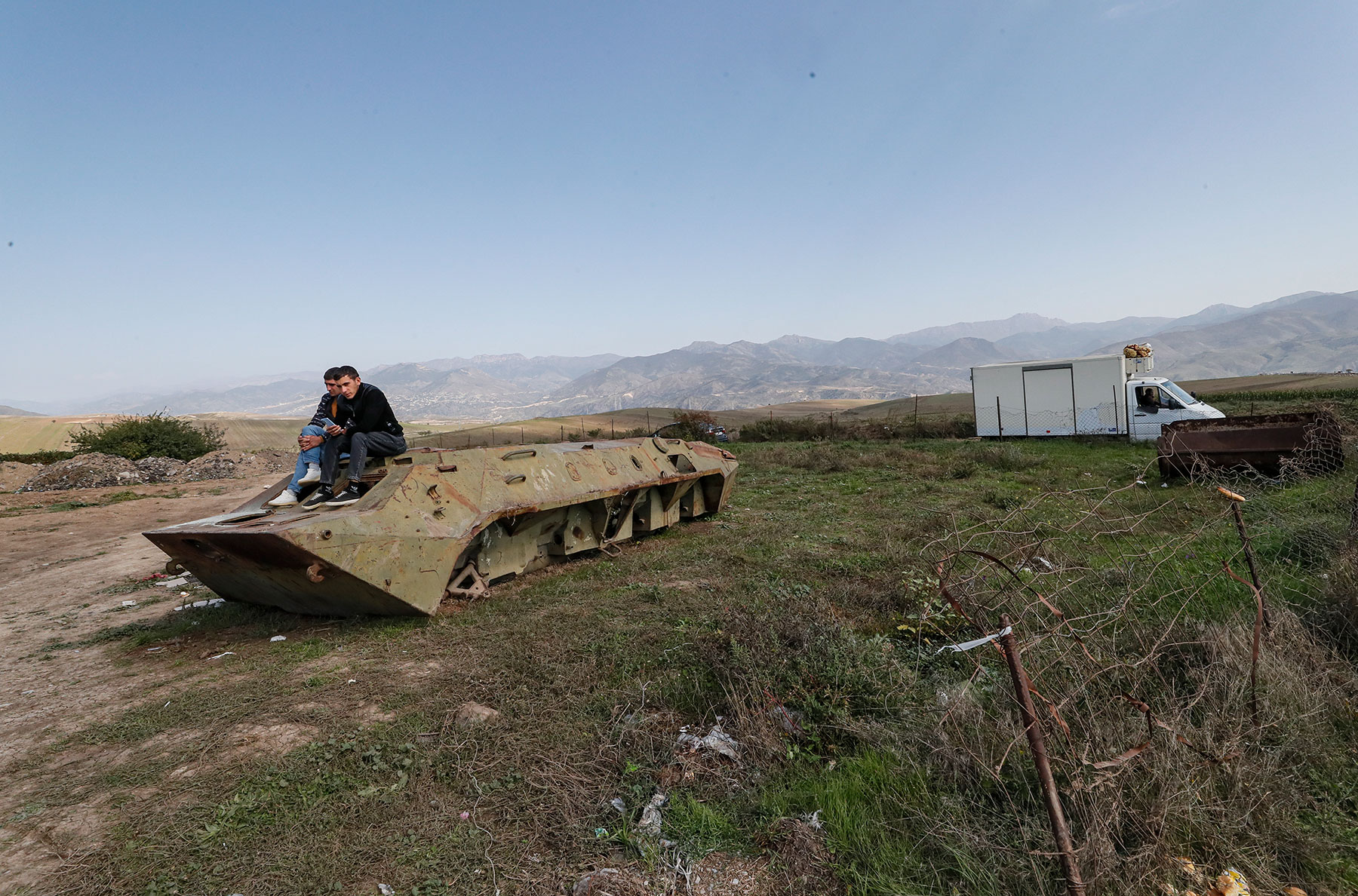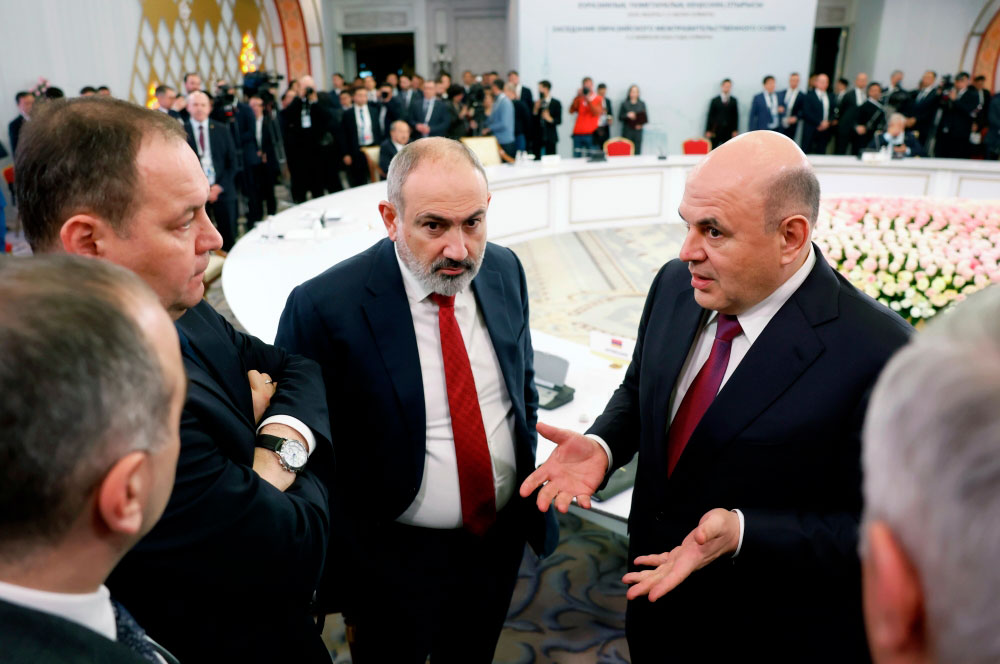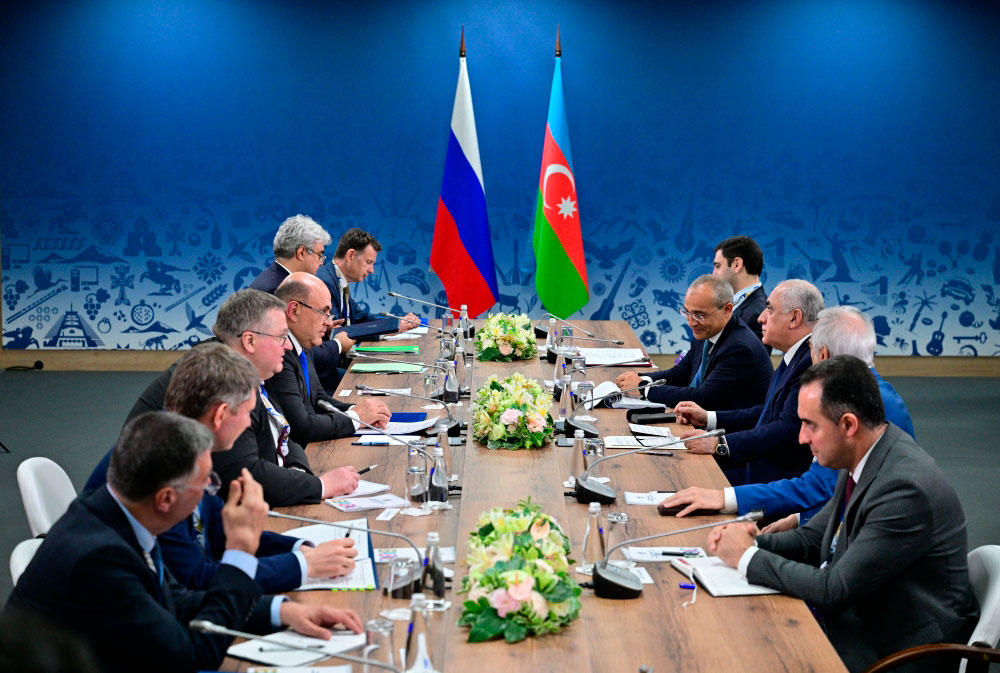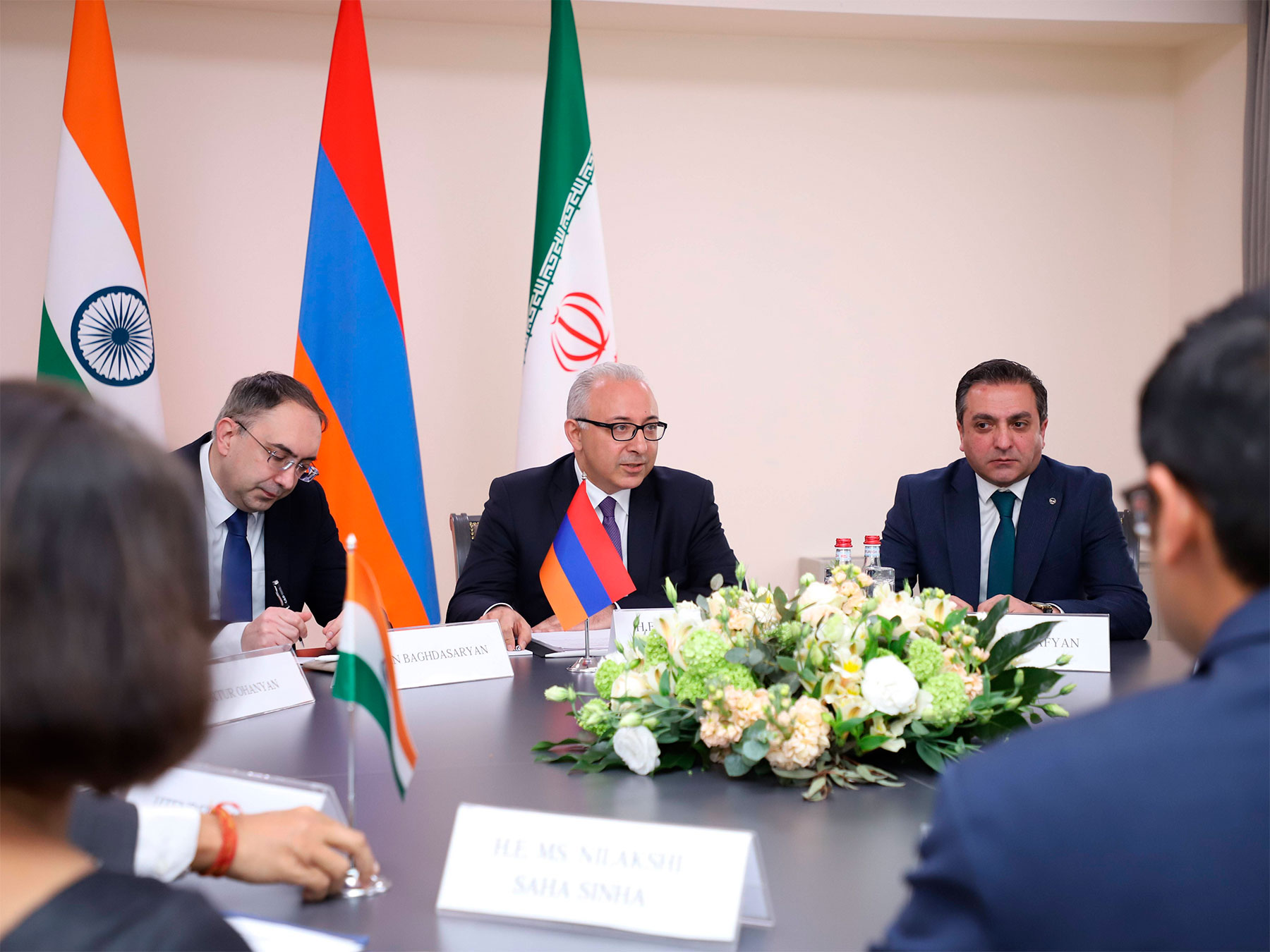These days, the Caucasus has been pushed to the margins of the international agenda and the media narrative by developments in and around Ukraine. However, the importance of geopolitical transformations in this part of Eurasia should by no means be underestimated.
If we try to describe the architecture of regional security in the Caucasus with a single formula or metaphor, the image of a busy and poorly regulated crossroads immediately comes to mind. On the one hand, there is competition of regulators, and it concerns not only great powers but also medium-sized and small nations. On the other hand, states, being the ‘drivers’, tend to follow one set of rules or the other, without any regard for past agreements or the approaches used by the regulators. And sometimes without much regard even for the interests of ‘passengers’.
So far, the key problem in the Caucasus could be the lack of regional integration. The Transcaucasian countries have different views on their own prospects. For many years, the 3+3 format has been discussed in the context of Caucasus security, but it exists in at least two interpretations: the Iranian and the Turkish. And while the former is oriented towards a rigid regional determinism (the three countries of the region plus three Eurasian giant neighbors), the latter, formally proposing the same thing, is more flexible as it takes into account the multi-level cooperation of Turkey with the West.
For Russia, the more inclusive interpretation, especially given the 2014-2023 trends, seems more palatable. But no matter how Ankara, Moscow and Tehran seek to shield themselves from external influence, it can hardly be contained. And it is not just about NATO. Both China and India are looking at the Caucasus with interest, and they have not yet deployed their resources there.
The problems of Baku and Yerevan, Tbilisi and Sukhum are now a concern not only to Moscow, the center of the once common Soviet project, but also to Paris, Beijing, Washington, New Delhi, Islamabad and Tel Aviv. So, more flexibility and more creativity will be needed to agree on the rules of the game in the region if peace and stability—and not a Eurasian “powder keg”— are the final goal.
Caucasus: turbulence in the shadow of Ukraine
These days, the Caucasus has been pushed to the margins of the international agenda and the media narrative by developments in and around Ukraine. However, the importance of geopolitical transformations in this part of Eurasia should by no means be underestimated.
To begin with, it was here, in South Caucasus, that the internationalization of the post-Soviet space was most active over the first 15 years of the 21st century. And it was here, in August 2008, that a precedent was set for revising the Belavezha accords, whereby the borders between the newly emerged post-Soviet sovereign entities were based on the dividing lines between the former Soviet republics. In essence, the process of NATO expansion was halted in this region because of the emergence of new post-Soviet states. Although, as the recent visit of Alliance Secretary General Jens Stoltenberg to Baku, Tbilisi and Yerevan showed, the movement in this direction has not stopped.
Second, while the focus of geopolitical confrontation between the West (the U.S. and its EU allies) and Russia has shifted from the Caucasus to the Middle East and Ukraine since 2014-2015, this region remains among the most turbulent in the post-Soviet space.
In the last four years alone, the status quo has changed twice in this part of Eurasia. As a result of the Second Karabakh War in 2020, the balance of power—maintained for 26 years—underwent radical transformations. And this did not only concern a separate ethno-political conflict between Armenia and Azerbaijan. There was a quality change in the role of external forces. Turkey’s unprecedented involvement in the Azerbaijani military campaign to restore the latter’s territorial integrity was the first case of disturbing the status quo in the region, all that with a non-Soviet state and a NATO member involved. In September 2023, the infrastructure of the unrecognized Nagorno-Karabakh Republic (NKR) was completely dismantled. Azerbaijan became the second state after Russia to integrate the secessionist territory, although the mode of how Karabakh and Chechnya got incorporated significantly differ.
The change in the status quo also contributed to Iran’s notable invigoration. Two Eurasian giants, China and India, have also adopted a higher profile in the Caucasus. With the start of Russia’s military operation in Ukraine in February 2022, the U.S., the EU (and France in particular) along with NATO shifted from “competitive cooperation” with Moscow to its “containment,” now also in the Caucasus.
Third, the formats of alliance and partnership that had existed unchanged for decades are currently modified before our eyes. The post-Karabakh status quo has been “synced up” with a large-scale crisis in Russian-Armenian relations, whereas confrontation mounts between Russia and the West just as the Tbilisi-Kiev strategic nexus tends to weaken. Besides, we see a certain re-prioritization of Russia’s approaches in the region, which is expressed in the buildup of Moscow’s cooperative ties with Baku and Ankara.
Thus, a reset of regional security is unfolding in Transcaucasia. Formats and models of relations that seemed immutable yesterday are now transformed and re-evaluated. New actors with their own ambitions and ideas of a perfect Caucasus are emerging alongside the players that have traditionally been active in the region.
Regional theatre of Cold War 2.0
Contradictions between Russia and the West over Caucasian geopolitics have not arisen today or yesterday. Moreover, they had been present long before the return of Crimea to Russia and the beginning of an armed standoff in the Donbass. The 2008 “five-day war” in South Ossetia was a vivid demonstration of resources and opportunities for confrontation.
However, before and after the “Hot August”, both Russia and the West were engaged “competitive cooperation” in the Caucasus despite a complete incompatibility of their positions regarding Georgia’s NATO membership. The OSCE Minsk Group on the Karabakh settlement, co-chaired by the U.S., France and Russia, survived not only the “five-day war” of 2008, but also the “Russian spring” of 2014. Two military escalations in the Karabakh in 2016 and 2020 demonstrated that the positions of Moscow and Washington may paradoxically be closer to one another than those of Russia and Turkey. Today, this looks like fiction, but before the launch of the so-called “European negotiating format” on the Armenian-Azerbaijani settlement in late 2021, European Council President Charles Michel and French President Emmanuel Macron twice called Russian leader Vladimir Putin in a bid to find common ground between EU interests and the Sochi-Moscow Russia-Azerbaijan-Armenia negotiating format.
The beginning of Russia’s military operation in Ukraine overhauled this balance. First of all, the positions of Russia and the West have become holistic. There is no room left for nuances or shades. That is why Moscow sees the EU mission in Armenia not only as proof of inconsistency in the Armenian leadership but also as an anti-Russian tool used by the West. At first glance, Russia and the West promote a similar peace agenda for Armenia and Azerbaijan: demarcation and delimitation of the border, unblocking of transportation communications in the region, and signing a peace treaty between Yerevan and Baku. However, each side sees itself as an exclusive moderator of the process, linking the end of the ethno-political conflict with its stronger presence in the Caucasus and striving to minimize the influence of its geopolitical rival.
The U.S. and its allies vigorously exploit the Armenian national trauma, attributing the loss of Karabakh to Moscow’s inactivity and unreliability or even to the Kremlin’s direct support of the Baku and Ankara interests. In September 2023, Russia did not lose war in South Caucasus, as its units were simply not engaged in any military confrontation with either side. However, we must honestly admit that those events made a dent in Moscow’s prestige. One could present every formal ground for non-recognition of the NKR by the Kremlin or by Armenia itself. And yet, considerations of political correctness and applications of formal jurisprudence fail to win over the mass consciousness. Many may get the feeling that Moscow, focusing all its efforts on Ukraine and confrontation with the West, has simply lowered the priority of the Caucasus thrust in its foreign policy. Hence the desire to move the “red lines” one way or another.
As a consequence, the U.S., the EU, NATO and some of its members have become more active in the Caucasus. The spectrum of their activity is wide, ranging from the buildup of French military supplies to Armenia to the vote in the European Parliament on considering the possible EU membership for Yerevan. That said, the West is more interested in reducing Russia’s military and political influence in the region rather than in providing reliable guarantees for Armenia’s national security or in blocking Azerbaijan’s maximalist aspirations.
Jens Stoltenberg’s visit to Baku, Yerevan and Tbilisi in March 2024 was quite revealing in this regard. Brussels believes now is the time for geopolitical homogenization of the region. The crisis in Russian-Armenian relations, Georgia’s desire to monetize its status as a NATO “aspirant” as soon as possible, the bolstered cooperation between Baku and Ankara (NATO’s second largest army) – all these factors work to promote the West’s agenda. However, the mosaic in the Caucasus is multicolored. And the Alliance (along with other stakeholders) needs to account for the existing shades and nuances.
“Easternization” of the Caucasus
Confrontation between Russia and the West is one of the key factors in geopolitics of the Caucasus but, as said, the regional mosaic in the Caucasus is a lot more complex than variations on the theme of proxy conflicts. The situation with Nagorno-Karabakh clearly demonstrated the capabilities and resources of the so-called “middle powers”, i.e. countries without nuclear weapons but with a clear foreign policy goal, will and determination to promote their national interests [1].
Baku’s actions, supported by Ankara, cannot be unambiguously attributed to a pro-Western or pro-Russian vector. At different times, Azerbaijan has either “frozen” or, on the contrary, improved bilateral relations with both Russia and the West—depending on the extent to which one or the other country reacted to the peace process or escalations in and around Karabakh. Today, Baku is a consistent opponent of Paris, as it assumes that the supply of French military equipment to Yerevan is fraught with a threat of revenge. Baku objects to the deployment of the EU observer mission on Armenia’s border with Azerbaijan. Here a commonality of positions with Moscow is on hand. In the meantime, though, Mr. Aliyev hosts the Head of NATO Jens Stoltenberg, promotes an energy partnership with the EU and consistently supports the territorial integrity of Ukraine. We should not forget that Baku is building up strategic interaction with Turkey not just in the format of good neighborly cooperation, but that it is also allied with a NATO member that played a decisive role in the Alliance’s two recent expansions—in particular, in the accession of Finland and Sweden.
At the same time, Iran perceives the strengthening of the Turkic tandem in the Caucasus as NATO and the Collective West cementing their influence [2]. The fact that Azerbaijan has a long and consistent interaction with Israel adds a special acrimony. Israeli supplies of arms to Baku made a significant contribution to its military successes in Karabakh in 2020 and 2023, and even the new escalation in the Gaza Strip has not broken their ties, despite the extremely negative reaction of Turkey to the Israeli actions. For Iran, which projects itself as one of the main defenders of Palestinian interests, the South Caucasus becomes an arena where its rivalry with Israel and indirectly with NATO and the U.S. continues.
In the mid-2000s, the interests of China and India in Transcaucasia were more discussed like signs on the wall. Both nations were taking a closer look at the region. Today, their presence in the Caucasus is becoming more and more tangible. China has made it into the TOP-3 largest trading partners of Georgia. Despite Tbilisi’s strategic interaction with NATO, the U.S. and the EU, Georgia signed its first free trade agreement with China [3]. Tbilisi’s decision to unilaterally cancel the visa regime for Chinese citizens should also be emphasized. The implementation of China’s ambitious “One Belt, One Road” initiative strongly dictates the involvement of the Caucasus nations. Meanwhile, the countries of the region see Beijing as a player distancing itself both from Moscow and Washington. In other words, they hope to see a third line in China’s policy, allowing them to escape from the dilemmas of a Cold War 2.0.
The involvement of India in the Caucasus affairs is also gaining momentum. The Indian diplomat and expert Achal Malhotra suggests as follows: “Azerbaijan’s proximity to Pakistan, on behalf of which Azerbaijan has repeatedly promoted the Pakistani position on Kashmir, is a constant irritant for India,” and as a result, India is interested in cooperation with Armenia. As estimated by Jason Wahlang and Sergei Melkonian, “the total volume of contracts for arms and military equipment [between New Delhi and Yerevan] is about USD 2 billion with a wide range of articles.” New Delhi is also keen on the North-South corridor, and here it is in need of close interaction with Russia and Iran, which causes certain phobias in the West. Meanwhile, Baku remains the largest trading partner of New Delhi. The Indian side exports USD 79.4 million worth of goods to the Caspian republic and imports USD 595 million worth of goods from Azerbaijan, which significantly exceeds the figures for Georgia and Armenia.
Thus, the Caucasus region is going through not only “Westernization” but also “Easternization.”
Poor prospects for integration
If we try to describe the architecture of regional security in the Caucasus with a single formula or metaphor, the image of a busy and poorly regulated crossroads immediately comes to mind. On the one hand, there is competition of regulators, and it concerns not only great powers but also medium-sized and small nations. On the other hand, states, being the ‘drivers’, tend to follow one set of rules or the other, without any regard for past agreements or the approaches used by the regulators. And sometimes without much regard even for the interests of ‘passengers’.
So far, the key problem in the Caucasus could be the lack of regional integration. The Transcaucasian countries have different views on their own prospects. And even if were were to presuppose the accelerated signing of a peace treaty between Baku and Yerevan, the fact that this would be achieved virtually from a position of strength leaves many questions and complex dilemmas for the future. Meanwhile, the roots of vigorous external interference in the Caucasus affairs (both from Russia, the West and countries of the East) lie in the lack of intra-regional unity. Even if we assume the success of Armenia’s drift to the West, this does not remove the problematic situation, as there are traces of Georgia correcting its rigid pro-Western course. Azerbaijan does not intend to get embedded in any structured integrations, preferring bilateral relations and pragmatics to values and deterministic attitudes.
For many years, the 3+3 format has been discussed in the context of Caucasus security, but it exists in at least two interpretations: the Iranian and the Turkish. And while the former is oriented towards a rigid regional determinism (the three countries of the region plus three Eurasian giant neighbors), the latter, formally proposing the same thing, is more flexible as it takes into account the multi-level cooperation of Turkey with the West.
For Russia, the more inclusive interpretation, especially given the 2014-2023 trends, seems more palatable. But no matter how Ankara, Moscow and Tehran seek to shield themselves from external influence, it can hardly be contained. And it is not just about NATO. Both China and India are looking at the Caucasus with interest, and they have not yet deployed their resources there. So, this still lies ahead of us, but these factors should be taken into consideration today, just as the buildup of NATO activity.
Everyone has been quick enough to write about globalization in three recent decades, both with positive and negative connotations. If we transfer general theoretical approaches or attitudes to the Caucasus, it becomes obvious that the problems of Baku and Yerevan, Tbilisi and Sukhum are now a concern not only to Moscow, the center of the once common Soviet project, but also to Paris, Beijing, Washington, New Delhi, Islamabad and Tel Aviv. So, more flexibility and more creativity will be needed to agree on the rules of the game in the region if peace and stability—and not a Eurasian “powder keg”— are the final goal.
1. Holmes, J.W. Most Safely in the Middle // International Journal, Spring 1984. Vol. 39. № 2, pp. 366–388.
2. Golmohammadi, V. and Markedonov, S.M. How Iran Perceives Turkey’s Rise in the South Caucasus // Russia in Global Affairs. 2024. Vol. 22. № 1. Pp. 152–175.
3. Leksyutina, Ya. V. China in South Caucasus: The Scale of Economic Presence // Post-Soviet Studies, 2022, vol. 5, #1, pp. 57-72

